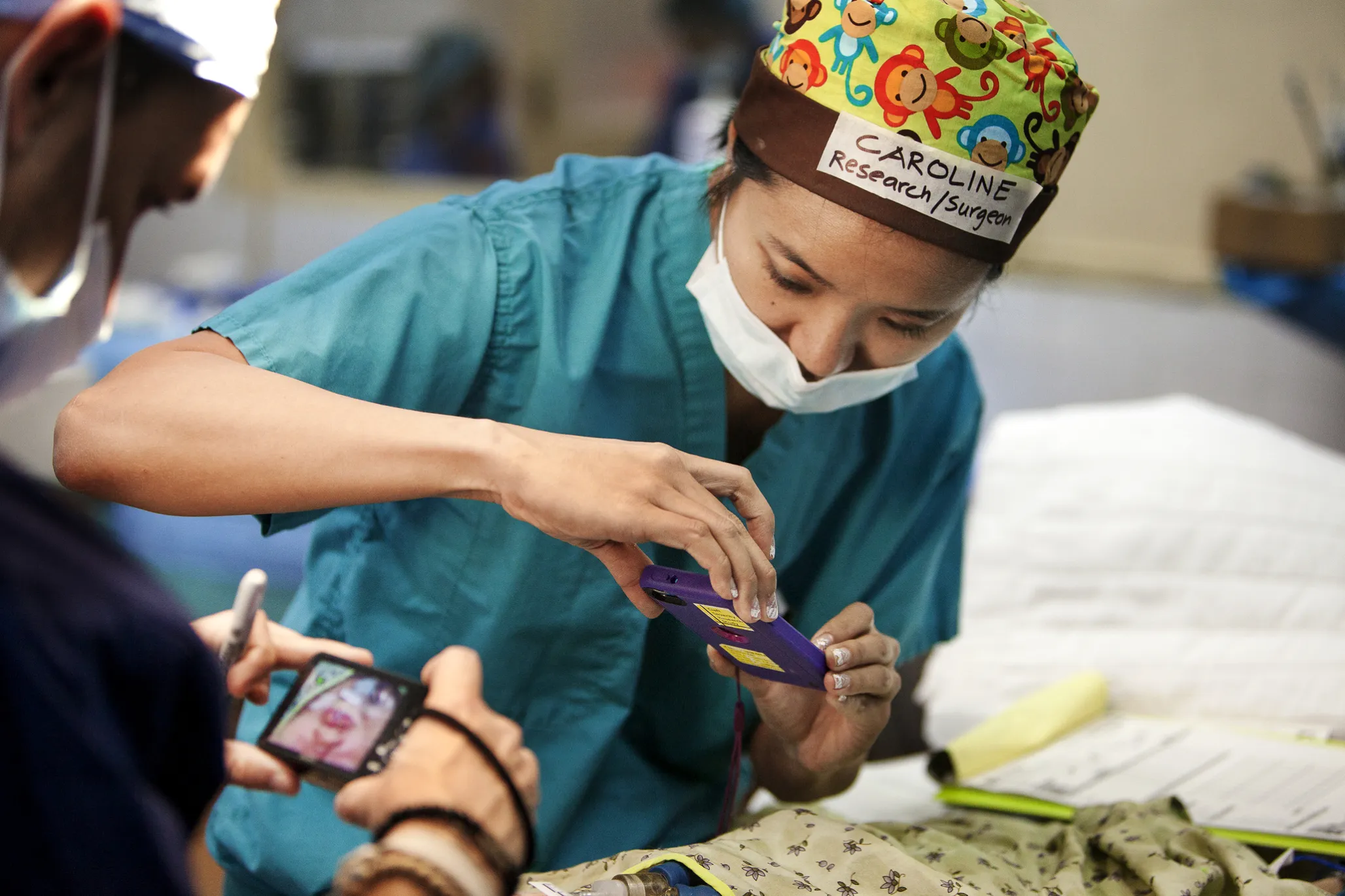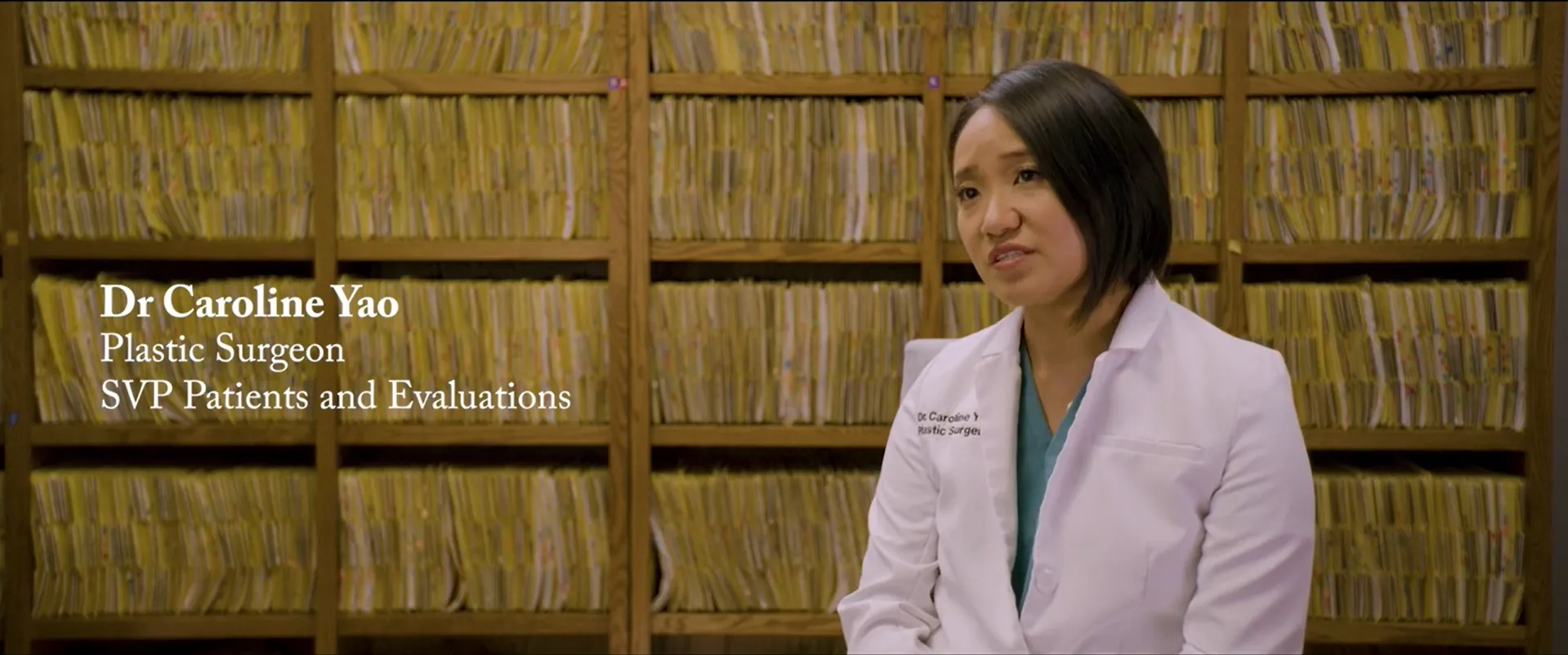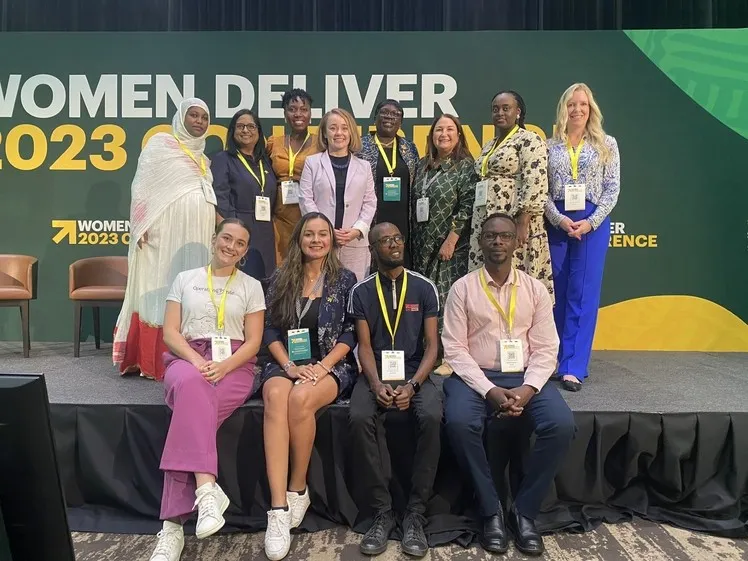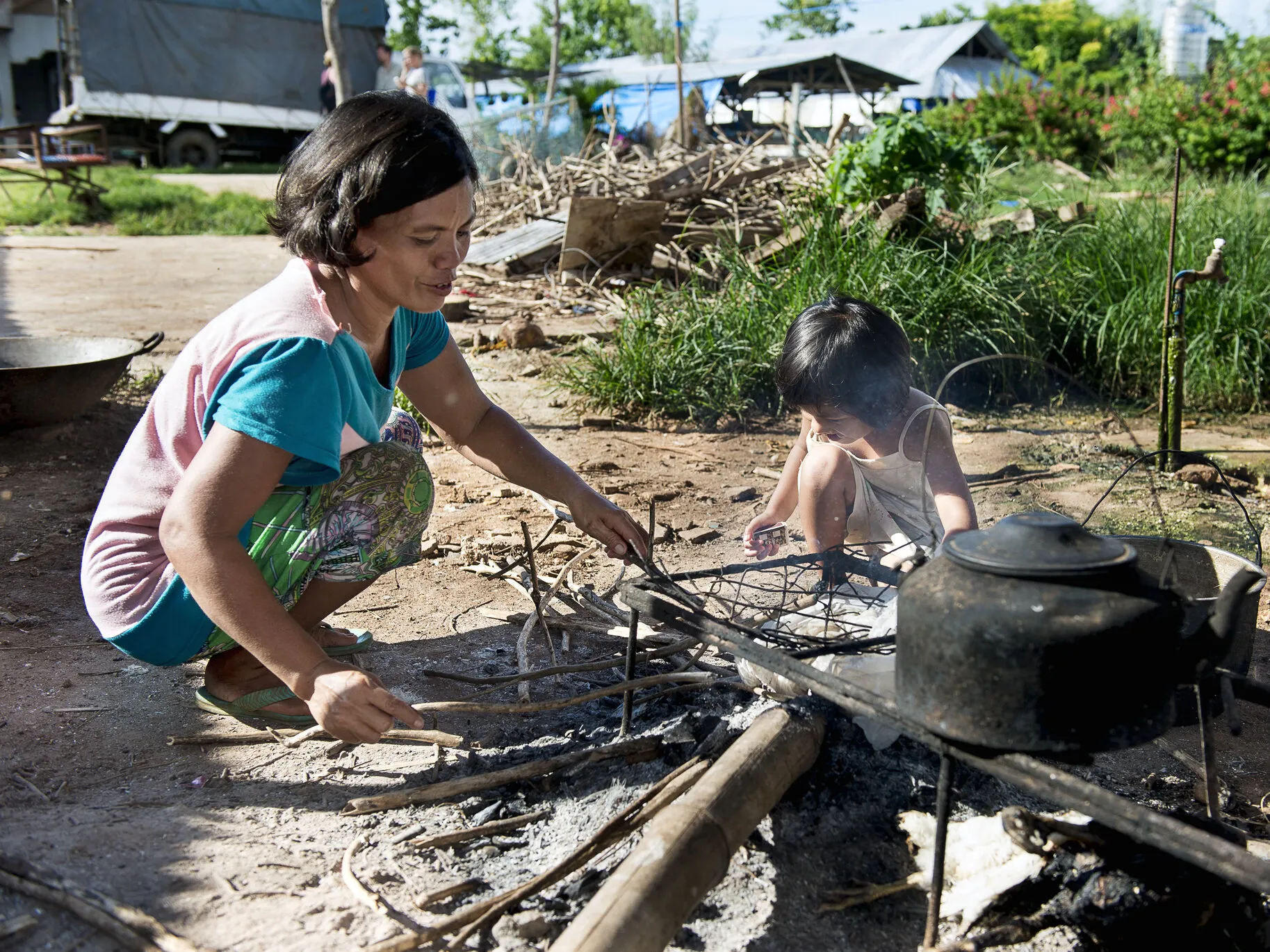Thought Leadership
Meet the Doctor Mixing Data and AI to Help Expand Operation Smile’s Global Impact
Surgeon and biostatistics leader Dr. Caroline Yao explains how the new technology is being piloted at the organization – and is the subject of the new branded series presented by Partnership on AI (PAI) and produced by BBC StoryWorks Commercial Productions, “Beyond the Code.”

It’s not often that you find a person with a background in biostatistics who is also a skilled plastic surgeon, but that is exactly the exceptional mix of talents that Dr. Caroline Yao brings to her role as senior vice president of research and patient metrics at Operation Smile. Starting as a medical trainee 14 years ago, Yao was one of the first global surgery fellows that worked with the global nonprofit, traveling the world to implement educational and surgical projects.
Since that time, she has leaned on her love of “numbers work” — previously Yao was also an analyst on Wall Street — to cast an analytic eye to the work of Operation Smile is doing to expanding access to safe and successful health care including cleft surgeries, essential surgeries and comprehensive care to patients in 37 countries. “We want to tell our story in a more number centric way, to show our impact with the tens of thousands of patients we treat each year,” she explains.
Now, through a partnership with Microsoft called AI For Good, Yao and the team at Operation Smile has been able to develop a customized AI Tool that synthesizes the organizations ‘s data and helps doctors around the world treat patients with cleft conditions more strategically than ever before.
Operation Smile’s work with AI is the focus of an episode of “Beyond the Code,’ a mini-documentary produced by BBC StoryWorks Commercial Productions.
We sat down with Yao to talk about her work, and this film.
At Operation Smile, you look at a high volume of data, compiling information and numbers. How did you start using AI tools to help you with this work?
Dr. Caroline Yao: We were trying to understand not just who our patients are, but how we helped them, to understand the quality of work we were doing. That started as a project where we collected before and after pictures of everyone that we took care of. And it became such a volume. We are doing tens of thousands of operations, and we don’t have enough surgeons to look at every single photo. When AI became more widely used in the last few years, we came together with Microsoft. They had a program called AI for Good, and it was a perfect synergy of what both of us are trying to do.
You know, cleft conditions are very visual, so these are all photo-based tools. We worked with Microsoft to develop algorithms to determine the severity of the cleft and also categorize what type of results you could get from different severities of the cleft condition.
How is this technology helping you in your day-to-day work?
We take care of patients with cleft. There are types of cleft lip or palate that are more severe or less severe. The parents and family should have certain expectations about how many operations are needed, what kind of surgical result they can expect, how many doctors’ visits they’ll need, what recovery will be like. And since cleft surgery is also something that’s highly specialized, we don’t have specialists in every corner of the world. So, day to day, if there’s not a cleft specialist available, you would use this algorithm to help with your diagnosis. You could take a picture with your phone camera, and then the algorithm in the AI could analyze the photo and give that medical person or provider some guidance on what to tell the family, even if they don’t have cleft experience.
Can you explain how the after-surgery photo is being used with the AI Tool?
In terms of surgery results, we can have various levels of symmetry based on where the patient started off and what techniques were used. Creating an objective measure is important because it is just like beauty or symmetry or looking at someone’s face. There are a lot of things that factor into someone’s opinion about how they look. Because of that subjectivity, using AI or an algorithm that can recognize some of those features helps us make a more objective assessment of the surgical outcome.
And it also helps with education surgeons directly in remote communities. How?
It can highlight different surgeons who might be potential educators. You know, there are some surgeons who habitually can take a very difficult situation or very difficult operation and make a beautiful result out of that. And those are people that the algorithm would highlight. And they can show us who these educators are and where they are.
AI and technology can help spread information about cleft — not just diagnosis, but teaching and showing people our experiences and our vast knowledge just becomes easier.
— Dr. Caroline Yao, senior vice president of research and patient metrics at Operation Smile
What are the challenges and opportunities that exist in countries like Rwanda, which is featured in the BBC Storyworks film?
Cleft is although a very common congenital condition, still quite rare overall, and it happens in one in 1,000 births. While people have cleft, it’s hard to have medical workers see enough volume of that condition and become properly trained. Just from the nature of that, having enough people experienced in cleft take care of children with the condition can be difficult.
And then when you go to places that are more remote or not as close to a city center, no matter where in the world you are, whether it’s in Africa or in the U.S., the same challenges arise. There just aren’t enough people who are familiar with this condition.
AI and technology can help spread information about cleft — not just diagnosis, but teaching and showing people our experiences and our vast knowledge just becomes easier.

What is the potential of this technology?
For cleft and a lot of other medical conditions, the potential is great for. Giving more people more access to medical care, whether it’s diagnosis or recommendations for treatment and always with the caveat of it, can’t be taken in a vacuum. I think there’s been a misconception that AI is a dangerous tool. But in this kind of instance, it works almost like a crowd sourced opinion. The way AI works in the crowdsourced opinion will be right most of the time, but not every single time.
Actual medical practitioners like me or people who are trained can use this as an extension of themselves. But they would certainly have to oversee it and make the final call for each individual because people are so different.
AI is not replacing anybody; it’s just giving you more tools to work with.
Exactly. It can extend your skills, extend your ability to care for more people, and you’ll get people faster care. I don’t think the human aspect of being a physician or surgeon can be replaced with that.








